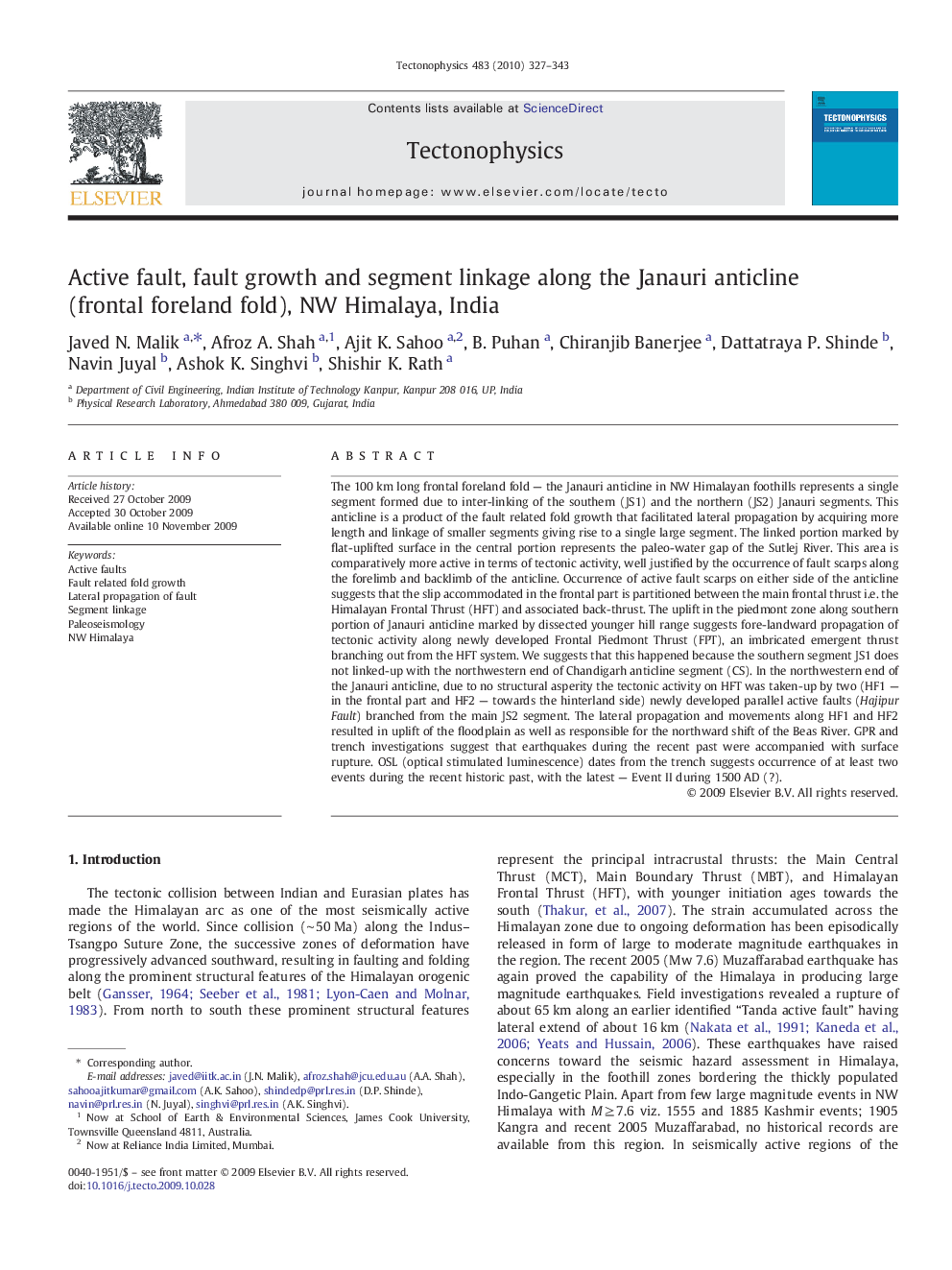| کد مقاله | کد نشریه | سال انتشار | مقاله انگلیسی | نسخه تمام متن |
|---|---|---|---|---|
| 4693493 | 1636872 | 2010 | 17 صفحه PDF | دانلود رایگان |

The 100 km long frontal foreland fold — the Janauri anticline in NW Himalayan foothills represents a single segment formed due to inter-linking of the southern (JS1) and the northern (JS2) Janauri segments. This anticline is a product of the fault related fold growth that facilitated lateral propagation by acquiring more length and linkage of smaller segments giving rise to a single large segment. The linked portion marked by flat-uplifted surface in the central portion represents the paleo-water gap of the Sutlej River. This area is comparatively more active in terms of tectonic activity, well justified by the occurrence of fault scarps along the forelimb and backlimb of the anticline. Occurrence of active fault scarps on either side of the anticline suggests that the slip accommodated in the frontal part is partitioned between the main frontal thrust i.e. the Himalayan Frontal Thrust (HFT) and associated back-thrust. The uplift in the piedmont zone along southern portion of Janauri anticline marked by dissected younger hill range suggests fore-landward propagation of tectonic activity along newly developed Frontal Piedmont Thrust (FPT), an imbricated emergent thrust branching out from the HFT system. We suggests that this happened because the southern segment JS1 does not linked-up with the northwestern end of Chandigarh anticline segment (CS). In the northwestern end of the Janauri anticline, due to no structural asperity the tectonic activity on HFT was taken-up by two (HF1 — in the frontal part and HF2 — towards the hinterland side) newly developed parallel active faults (Hajipur Fault) branched from the main JS2 segment. The lateral propagation and movements along HF1 and HF2 resulted in uplift of the floodplain as well as responsible for the northward shift of the Beas River. GPR and trench investigations suggest that earthquakes during the recent past were accompanied with surface rupture. OSL (optical stimulated luminescence) dates from the trench suggests occurrence of at least two events during the recent historic past, with the latest — Event II during 1500 AD (?).
Journal: Tectonophysics - Volume 483, Issues 3–4, 10 March 2010, Pages 327–343